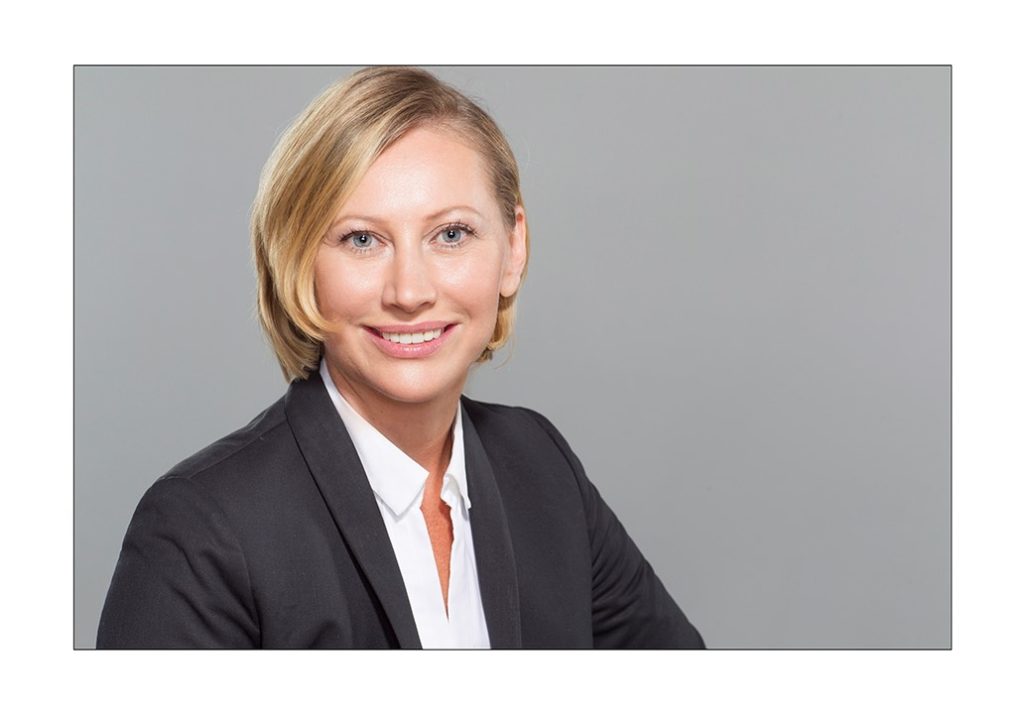An interview by Natalia Korchakova-Heeb, Managing Director at SDG.17 Consulting GmbH.
In September 2020, we saw governments, investors and corporates make multiple announcements during Climate Week and World Green Building Week committing to a net zero emissions society. These commitments align well with the EU Green Deal to make Europe the world’s first climate-neutral continent. The EU is currently reviewing a number of legislative initiatives, including enshrining the 2050 climate-neutrality objective into EU law, engaging citizens and all parts of society in climate action through the European Climate Pact, and reducing net greenhouse gas emissions by at least 55% under the 2030 Climate Target Plan.
As more legislation is adopted throughout the continent to enable a transition to a net zero emissions society, investors are seeking to finance projects within sustainable infrastructure. Sustainable infrastructure encompasses all aspects of the built environment, from transportation to energy generation and distribution, to the buildings we live and work in. While investors traditionally focus on large renewable energy projects or transportation-related projects, the hidden opportunity for investment is the green building sector.
Green buildings have always had investment potential, but the limiting factor has typically been scale. The amount of investment required to build or retrofit a green building is small compared to the financing available. However, green buildings in aggregate represent a significant market value. The International Finance Corporation estimates that there is a $24.7 trillion potential for investment in new green buildings across emerging economies alone. The entirety of Europe’s building stock also needs to be retrofit to meet the EU’s climate neutrality target, which becomes a much more compelling case for the financial community.
Today, I had the pleasure of taking a closer look at this subject with Harry Fernau, Global Product Manager for Energy and Green Building at SGS, and Tom Saunders, Managing Director at Sintali, whom I met through their work on sustainability and the EDGE green building certification program. In this interview, we delve into the opportunity that green buildings represent in the sustainable infrastructure market, how green buildings can drive the transition to net zero and how the construction market has changed during COVID-19 pandemic.
Thank you both for taking time to share your views with me. I’d like to start by asking how you see the zero carbon economy fitting into sustainable infrastructure?
Tom: All sustainable infrastructure will need to shift to zero carbon for us to meet the Paris Agreement and the EU’s target of becoming a climate-neutral continent. If we look at the green building segment of the sustainable infrastructure market in particular, the technology to develop or retrofit buildings to zero carbon already exists. What has been missing so far is a tool to do this effectively and verify the actual results. That is what is exciting about the new EDGE Zero Carbon accreditation. IFC, who operates the EDGE green building standard, launched EDGE Zero Carbon at last year’s Climate Week as a response to the need for a third-party verified standard to meet net zero buildings. So far, it has had really positive uptake in the market.
How does EDGE Zero Carbon help building owners and developers transition to net zero buildings?
Tom: To get EDGE Zero Carbon, a building must reach at minimum 40 percent energy efficiency, before supplementing with on-site/off-site renewable energy. All of this is done through the free EDGE App, which allows anyone, no matter where they are in the world, to map out the transition to zero carbon for their building. Companies that want to verify that achievement come to us at Sintali and SGS for accreditation. What makes EDGE Zero Carbon unique is the use of the software tool, which allows companies to prepare a roadmap with efficiency measures they need to take, along with an initial assessment of the incremental cost and return on investment for each measure, to reach zero carbon. This becomes very powerful when applied across an entire portfolio of buildings. We work with property owners who are looking at this scale and support them in the development of zero carbon portfolio strategies. We provide them with the framework and tools they need to evaluate their entire building stock, so they can identify the practical steps they need to take to transition the stock to zero carbon.
So companies are utilising EDGE for portfolio-scale certifications?
Harry: Absolutely. We are seeing more and more companies making commitments to having a green-certified portfolio around the world and EDGE is a great tool to make that a reality. To name but a few examples of what is already happening: Acorn Group in Kenya launched a green bond late last year on its student housing portfolio that will be entirely EDGE-certified, Imperial Homes announced the commitment of certifying all of its pipeline of homes with EDGE, and Lidl Lithuania has certified all of its stores in the country using EDGE. The breadth of the types of companies that are engaging with portfolio certification, as well as the geographic spread, point to an important trend. Building owners are thinking bigger than just certifying their new flagship headquarters, which of course is a trend that aligns what we are seeing in the business world around climate action and corporate responsibility. And now with the important transition to net zero emissions, it’s about taking those certified portfolios on a journey and mapping out the strategy of how to turn each building, and all future buildings, zero carbon.
How does portfolio certification actually work?
Harry: We have developed an efficient process alongside Sintali that allows portfolio owners to assess and certify all of their buildings in a cost-effective and resource-effective manner, whether it is a portfolio of 50 buildings across one country or 8,000 buildings across the world. The EDGE App plays an important role as the entire process is online, but we also have our own processes in place to help building owners categorise their portfolios, find efficiencies of scale, and resource the project appropriately to get the results they desire. Portfolio certification has been incredibly useful for clients looking to access finance, because it allows companies to aggregate their assets and look at a sustainable portfolio investment strategy, which becomes more interesting for the financial community. As Tom mentioned, we already have portfolio clients around the world doing this and the feedback has been very positive. As more and more investors look at green-certified real estate to channel green finance and support the transition to a net zero economy, we anticipate portfolio certification will continue to grow over the next few years.
Can you elaborate on how has EDGE enabled developers to access to more sources of investment?
Tom: Companies are using EDGE to develop a sustainable portfolio investment strategy and going to investors to access finance for the refurbishment or development of multiple buildings. Investors are very interested in these projects because EDGE gives them the quantifiable data they need to understand the environmental impact of their investments. We have spoken with investors around the world and they all echo the same sentiments – they are very interested in investing in green buildings but have struggled to identify projects and to understand what is green and what isn’t, and importantly to identify sufficient projects at the scale required. This is a key reason why green buildings have not played a key role in the development of the sustainable infrastructure market so far. EDGE changes this market landscape completely because the data that comes out of the EDGE App is in a format that the investment community can understand – percentage improvements over a local baseline and carbon emissions savings. By aggregating the projects into a bigger portfolio, the project suddenly scales to a deal that can be financed by large players in the market.
So the financial community is adopting EDGE as a recognised standard?
Harry: Absolutely, and in many cases EDGE is being embedded into the lending process. Over the last couple of years, we have been working closely with a variety of banks and funds to help them use EDGE as part of their eligibility criteria for releasing funds, and in some cases as part of their technical assistance programs. EDGE certified projects need to be 20 percent more efficient than the local baseline, which aligns well with many financial lending programs. In these cases, investors use EDGE certification as a way for clients to prove compliance with this requirement. What has also been rewarding to see is that many investors have also certified their own portfolios of buildings as a proof of concept and a way to generate interest in the markets they operate in.
2020 has been a pivotal year for everyone with COVID-19 changing the fundamentals of business. How do you see the sustainable infrastructure market changing and what the current landscape looks like?
Tom: The real estate and construction sector has changed significantly in the last few months. All construction projects globally froze or experienced delays during the periods of lockdown and the pace of recovery has varied across the world. It’s likely that we will continue to see “ups and downs” as we face the next wave of COVID. This has presented challenges to the industry as it has across all sectors, but as always innovation and adaptation are crucial. There is significant attention being paid to real estate as stakeholders become more aware of their built environment. Property owners are looking at refurbishment properties and evaluating the efficiency of their buildings to reduce operational costs and make improvements, while governments are looking at major construction projects to stimulate the economy.
Has COVID19 affected your green building certification work? For example, EDGE certification typically requires a site audit. How are site audits being handled given that many countries are facing another wave of lockdowns and international travel is still restricted?
Harry: COVID19 has not affected our operations because SGS launched remote auditing back in 2018, so we were prepared to shift from on-site audits to remote audits. We originally launched remote audits because we saw a need in the market for a solution that gave customers more flexibility with timing. Oftentimes there are tight project and construction deadlines, and things change quite quickly, so having the ability to conduct an audit on the customer’s timeline as opposed to needing to schedule an on-site visit can be incredibly powerful. SGS has developed its own proprietary software tool that allows anyone to visit the site and work with an auditor, while ensuring the same quality audit is delivered. Now with COVID, we are very glad to have had two years’ experience running remote audits because the process is seamless and has not disrupted business. Our clients have been very satisfied with remote audits too, which tells us that the market is ready for this solution.
Earlier this year, SDG17 launched a global platform called PPPHealth4All to facilitate the development of sustainable public-private partnerships in the healthcare sector. Are green building principles applicable to the healthcare sector?
Tom: They are certainly applicable to healthcare. The more use cases for applying principles of green buildings and more reduction of carbon emissions is achieved, the better for the people and the planet. We recently certified the Ghana Infectious Disease Centre (GIDC) which has been developed in response to the COVID-19 pandemic. As the first infectious disease centre in Ghana, the GIDC will provide needed healthcare services to the city. Another example of the value of a certified hospital is the Mother and Baby Unit at the Komfo Anokye Teaching Hospital (KATH) in Kumasi. The 160-bed facility houses the maternity, neonatal and paediatric intensive care units of KATH. Africa Building Partners (ABP) built the facility with largely local workforce and has been able to use the savings from operating an efficient hospital to pay for additional staff and equipment. The healthcare sector has much to gain from shifting towards resource-efficient, green buildings and with the sudden focus on healthcare due to COVID, we are certain that things will continue to move that way.
Thank you both for this interesting conversation and sharing your views. It sounds like despite the market turmoil right now, green buildings remain an important investment to make, whether you are an owner, developer or investor, and the development of sustainable infrastructure should not be impeded by the current pandemic.
For more information on Sintali-SGS offerings, you can download a copy of the brochure here.

This interview was conducted by Natalia Korchakova-Heeb, Managing Director at SDG.17 Consulting GmbH.
SDG.17 Consulting is a company operating from Frankfurt am Main, Germany. SDG.17 Consulting is deeply engaged in promotion of 2030 Sustainable Development Agenda, advocating for sustainable infrastructure, strong public-private partnerships, good health and well-being, inclusive economic growth, investment in infrastructure, and creating environments to foster innovation. The company advocates for policies and practices that encourage the development of low-carbon, climate-resilient infrastructure and are delivered through people-first public-private partnerships.





